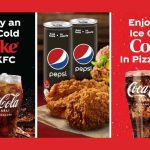
By: John D Chacko, [email protected]
Study the minutes of board meetings of companies behind brands
Almost always, the discussions center on the standard agenda of performance, governance, managing risk, about reputation and maybe about people.
Yet, when you ask board members what is the most important asset of the company, they invariably cite ‘our people and our brands, usually, in the context of risk and reputation.
Rarely is there real strategic discussion about branding.
Boards must realise the fundamental difference between brand and branding, and, between branding and marketing.
Brand and branding are words used interchangeably and loosely, that in itself reflects a cosmetic understanding of the subject.
Dear board, the brand is a name, symbol, logo or sign given to the product or service which identifies and differentiates it from others, whereas branding is the art and science of creating a convergence between what you want people to think of your brand and what they actually think of the brand. Thank you.
Do understand that the brand is the company as there is an inextricable link between the brand and the company culture.
Why are directors not fitting in branding on the agenda during board meetings? Is it because they feel that their fundamental responsibility is in the areas of risk, governance and performance? Is not branding and corporate culture fundamental drivers of performance?
Take the April 2017 United Airlines kerfuffle where a passenger was, to put it mildly, physically extracted from his seat because United wanted the seat for its crew.
Four passengers were picked in some random selection methodology, and the passenger in question was one of them. This passenger refused to leave his seat and rightly so, too. After all, he was already seated on the aircraft.
The normal practice is, during check-in or after check-in, the counter staff would call out to passengers to volunteer to give up his or her seat in exchange for cash compensation and a seat on a later flight. Hello, an airline cannot just yank a passenger out of his or her seat just to accommodate a crew member.
The entire removal process of the said passenger was recorded and posted on social network for the whole world to see. That video elicited a very unfavourable view towards United.
What the episode highlights is the lack of branding strategy and the branding culture inculcated within the corporate culture.
The passenger was described as belligerent and disruptive by the CEO who also commended on the good job done by the staff.
In an open letter to United’s 82,000 employees, he applauded them for going “above and beyond” amid the uproar over the passenger who was taken off the flight. ” While I deeply regret this situation arose, I also emphatically stand behind all of you, and I want to commend you for continuing to go above and beyond to ensure we fly right,” the CEO’s letter read.
Oh, by the way, only weeks before the incident, the CEO was awarded ‘Communicator of The Year’ by PRWeek, and, the tagline of United Airlines is ‘Come Fly The Friendly Skies’.
Overnight, tons of creative, and often humorous, memes by people worldwide, appeared.
Is the United board a board that understands the importance of branding? Is the corporate culture of this airline in sync with its brand promise?
Many board directors think of branding as simply marketing communications and visual identity systems (e.g., the corporate logo, symbols, colour, font., etc.) and not as a core driver of shareholder value.
I suspect that is attributable to board directors having a very limited understanding of the difference between branding and marketing.
Often quoted is that 60% to 80% of the market capitalisation of public companies is due to intangibles such as its reputation in the marketplace, with the remainder accounting for tangible assets. After all, if given a choice between buying a company’s good name or its buildings and machinery, the former would be a far more enduring investment; that is, as long as it is managed correctly.
Take Coca-Cola, where I spent the longest time in my international career. Today the Coca-Cola Company has a market cap of around USD192 billion. Without the power of brand Coca-Cola, I dare say its market cap would be hardly worth writing home about.
There has been a widening gap between tangible assets such as factories, equipment, and inventory, and intangible assets, such as brand and intellectual property, in determining a company’s market value.
In 1985, 68% of a company’s market value was determined by tangible assets. By 1995, tangible assets made up 32% of a company’s value, and in 2015, tangible assets accounted for only 13% of a company’s value. (Deborah DeHaas, National Managing Partner of the Center for Board Effectiveness for Deloitte LLP).
In corporate history, a much discussed and debated deal was why Philip Morris, a company known as a tobacco company, acquired Kraft Foods back in 1988 for a then astronomical USD13.1 billion. I spent the second longest time in my international career with Kraft Foods. Simply put, the board of Phillip Morris realised the brands in the Kraft Foods stable, alongside with the Kraft corporate brand, have immense legacy value around the world.
For board directors to properly carry out their responsibilities, they must incorporate branding strategy as a key part of the company strategy, as well as into their decision-making processes, to ensure that every decision is consistent with the brand promise.
Lacking a precise response during a crisis is simply unforgivable in this day and age. In the case of United Airlines, a 90-year-old brand, it was not only way too late but shamelessly without insight and foresight. But kudos to the CEO who days after the event said amongst other things “I want you to know that we take full responsibility and we will work to make it right. It’s never too late to do the right thing”. I believe United’s reputational and branding penny dropped.
Fundamentally, boards need to understand that branding is the strategic domain of a corporation and marketing is the operational domain. While branding is in the strategic domain, boards cannot simply abdicate this responsibility to marketing.
If the brand is one of the most important assets of a corporation, then branding must be a board level topic, not just from a reputational risk perspective, but from a culture and performance perspective. The relationship between brand and reputation needs to be internalised. Brand centric boards will view brand building as the ultimate purpose of the company and will endeavour to make the brand promise relevant for all stakeholders.
Reputation centric boards are more likely to focus on theirs and their company’s reputation as a legitimate entity that is compliant and respected by their stakeholders. Yes, that is unquestionably important, but consider the power of being both brand and reputation centric.
If marketing is the operational domain of branding, does marketing have a firm seat on the boardroom table?
The composition of boards invariably will see professionals from fields in finance, legal, human resource, information technology, operations, and, from backgrounds that could be valuable to a board in terms of their network and standing in the corporate, government or political sector.
How often do you see a real strategic branding and marketing professional on boards? Not necessarily someone who has had some exposure to marketing somewhere along the line in their
career, but someone who is an experienced strategic marketing thought leader who can lead and guide a strategic dialogue about branding and marketing?
A snafu like the handling of the United Airlines incident by the CEO led to a loss of brand and company value in a matter of days. The Coca-Cola Company has brand performance firmly on its agenda, and its KPIs at several levels reflect that. It tracks the health of the brand locally, regionally and globally because it is their most important asset. So should not the KPIs of a board include the health of the brand with metrics that measure it?
I was once told by a member of a Malaysian board that I should not waste valuable time tracking the health of the brand but activate all available tactical brand levers to win customers. Well, that brand is now at a low point and has sought foreign assistance out of desperation.
Boards need to give branding and marketing a firm seat at the board room table and not abdicate this responsibility or act only when there is a crisis.
John D Chacko is the President of International Advertising Association (IAA), Malaysia, VP Development IAA Asia and a member of the IAA World Board.
BEST OF GLOBAL DIGITAL MARKETING Conference 2017
For the seventh year running, we are bringing back the famous Best of Global Digital Marketing Conference to KL with a special focus on Content Marketing this year. Unique case-study based learning, as our team monitors over 200 digital marketing award shows across the globe and interviews the winners. Based on this extensive work, we produce in-depth case studies.
Speakers with digital domain expertise:
• Hando Sinisalu, CEO of Best Marketing International
• Kyoko Yonezawa, Creative Technologist and member of Dentsu Lab Tokyo
• Scott Gray, Experience Director, Mirum South Africa
Global Case Studies include:
BANKING & INSURANCE: Compare The Market, Advocards, Allianz, Ally Bank, Barclays….
TECHNOLOGY & STARTUPS: Hubspot, Pipedrive, MoveHub….
AUTOMOTIVE: Volkswagen, Volvo, Nissan, etc FMCG: Ariel, Unilever, Snickers…
RETAIL: McDonald’s, Harvey Nichols, Zalando….
TRAVEL & TOURISM: Qatar Airways, Transavia, Finland Tourism, Sweden Tourism, KLM…
Each best practice case study is presented based on…
Business problem: What is the market situation? Who are the competitors? What is the target audience? What are the main business/marketing challenges? What are the goals?
Solutions: What are the consumer insights? What was the creative strategy? What was the media strategy? What were the results of the campaign?
Lessons: What other marketers from other countries/other business sectors could learn from this case study? What are the main mistakes to avoid?
The Best of Global Digital Marketing Conference has won popularity in more than 30 cities around the world from Singapore, Moscow, Jakarta, Istanbul to Amsterdam, Johannesburg, Prague, Shanghai, Seoul, etc.
Date: 14 August, 2017 (Thursday)
Venue: Sime Darby Convention Centre, Kuala Lumpur.
Time: 8.30am – 5.00pm
Book your seats early! Call Ruby on 03-77262588 or [email protected]
MARKETING Magazine is not responsible for the content of external sites.











